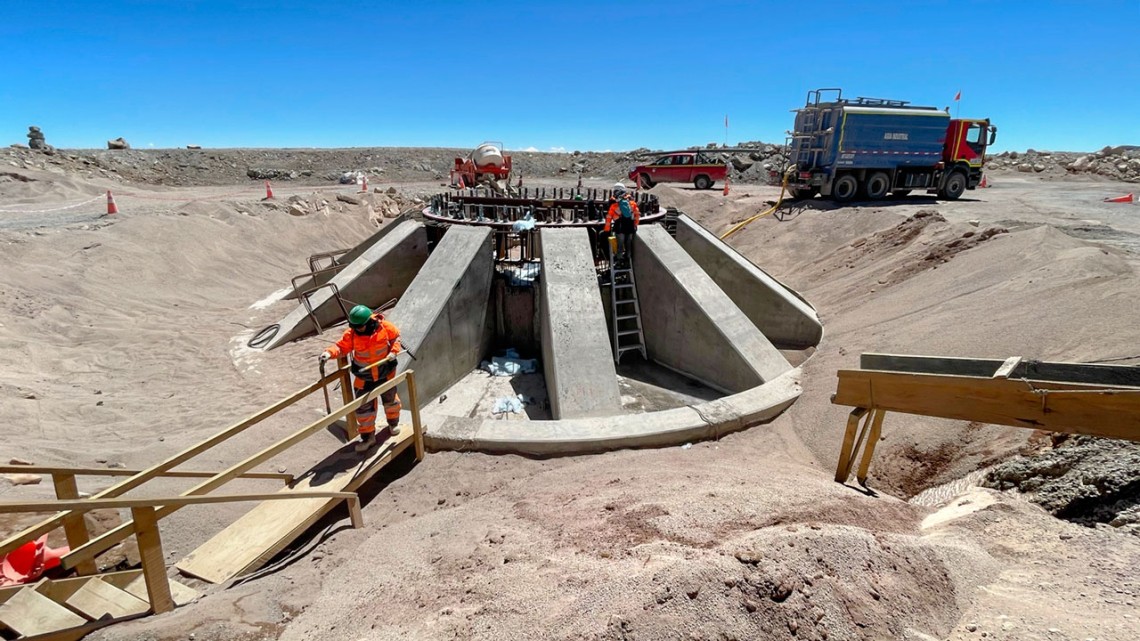
A construction crew does precast work on the foundation of the Fred Young Submillimeter Telescope.
Cornell-led telescope project completion in sight
By Linda B. Glaser
The construction of the Fred Young Submillimeter Telescope (FYST) being developed by CCAT Observatory Inc., an international consortium of universities led by Cornell, is drawing to a close.
Work is poised to begin on a defining feature of the telescope – the “elevation” part that supports the upper structure and will contain the telescope’s mirrors. Unlike almost any other telescope to date, the part will be constructed from Invar, a special formulation of steel that has an extremely low coefficient of thermal expansion.
“This means that it doesn’t get bigger when it’s hot and it doesn’t shrink when it’s cold,” said Jim Blair, FYST project manager in the Department of Astronomy, in the College of Arts and Sciences. “At least, it’s greatly, greatly reduced with Invar compared to regular steel. And that’s important for the science because, at the wavelengths we are looking at, thermal expansion would actually affect the data and could ruin it.”
Thus, despite some similarities to other telescopes, Blair said, the FYST “will be able to look regularly at frequency ranges very few other telescopes can even detect because of some of these design elements and material choices.”
The telescope’s mirrors are also cutting-edge technology, Blair said. They’re being built in the Netherlands by Airborne, one of the world’s premier carbon fiber companies.
“Like the Invar we’re using for the elevation structure, the mirrors are the ‘secret sauce’ to being able to do our science,” he said. “Physicists have known how to measure in the submillimeter frequency ranges that the FYST is targeting for a long time, but before now nobody’s been able to build a telescope to do it – at least not at an affordable price. The carbon fiber structures that are supporting our mirrors are absolutely state of the art.”
The internal steel skeletal structures for yoke arms A and B, which will hold the three-story-tall elevation part in place, are almost complete. Once the elevation part is finished, all these massive sections will be mounted on top of the already-completed lower portions, and the telescope will be nearly assembled. The project team estimates that by the end of 2023 they will begin to test the telescope in Germany.
Fred Young ’64, M.Eng. ’66, MBA ’66, after whom the telescope is named in appreciation for his generous support of the project, recently visited the construction site.
“Seeing the beginning of the construction of the telescope in Germany was enormously satisfying as the culmination of many years of planning and preparation,” he said. “What was particularly striking was the enormous size of the rotating azimuth base which is the first element to be completed. The rapid and precisely controlled movement facilitated by large electric motors was an impressive demonstration of its ability to scan the sky. We clearly have much to look forward to now.”
Read the full story on the Arts and Sciences website.
Linda B. Glaser is news and media relations manager for the College of Arts and Sciences.
Media Contact
Get Cornell news delivered right to your inbox.
Subscribe
